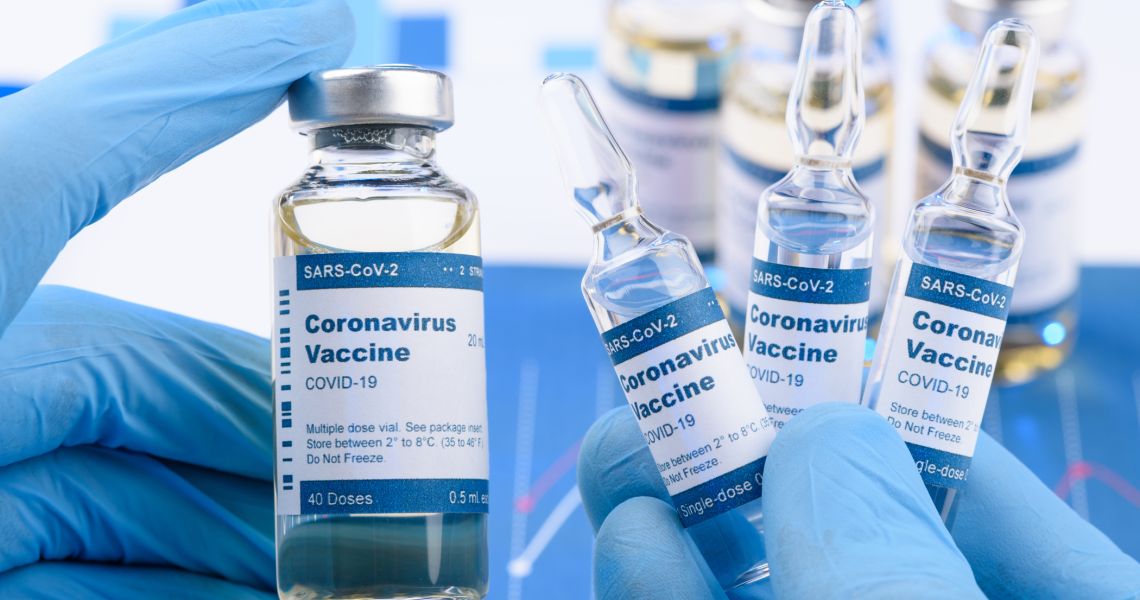In December 2020, COVID-19 vaccine trials from U.S. pharmaceutical corporations Pfizer and Moderna showed, in preliminary data, high-efficacy rates, resulting in Emergency Use Authorizations for both vaccines. The question is, how did we get there and what comes next?
All biologics, vaccines and drug therapies, developed in the United States must successfully complete a rigorous scientific and regulatory approval process through the U.S. Food and Drug Administration (FDA), to ensure their safety, effectiveness, and quality.
The George Washington University (GW) School of Medicine and Health Sciences (SMHS) is home to a clinical trial site for a COVID-19 vaccine from Moderna, which shows an efficacy rate of 94.5%.

Melissa Tice, PhD, director of the Regulatory Affairs Program at SMHS, walks through the FDA process for vaccine approval and the road ahead.
Q: Can you explain what emergency use authorization is for a vaccine, and what the FDA needs to see to give that authorization?
Tice: When the secretary of the U.S. Department of Health and Human Services declares a public health emergency, which is in place due to the pandemic, that allows the FDA to grant an emergency use authorization (EUA).
The EUA permits the use of an unapproved medical product prior to the FDA standard review and approval process to receive FDA authorization for use during an emergency. For example, when Moderna submitted an emergency use authorization request with the preliminary clinical data from the COVID-19 trial. That clinical data had to show efficacy of greater than 50% over the placebo evaluated in the clinical study and would need safety data on a minimum of 3,000 patients for at least two months after their second dose of the vaccine.
Also, for an EUA, the company needs to submit the chemistry, manufacturing, and control (CMC) information for the vaccine. which provides the complete details of how the company manufactures the vaccine, that data has to go in one month before the EUA submission. The FDA is not cutting any corners on this. They want to make sure you can manufacture a high-quality vaccine, and they want to make sure it’s efficacious and safe.
Q: What happens when a company has the interim data needed for EUA approval? What’s the review process at the FDA?
Tice: The FDA has set up teams of reviewers across agencies that are working together to turn things around for COVID-19 quickly and accurately. The FDA Center for Biologics Evaluation and Research is the agency that reviews all vaccine applications, and they are probably ready with a special group of reviewers for COVID-19 vaccines to move the review quickly for the EUA.
They’ll review all the data from any available nonclinical data, and the completed Phase I and Phase II clinical trials and make sure that the data support the preliminary findings from the Phase III trial.
Q: What about for full licensure? What is the process for that after an EUA is granted?
Tice: It’s very similar. To get a vaccine approved by the FDA, you’re required to provide CMC information, and results from the non-clinical studies, in vivo and in vitro testing, to support testing in humans.
And you’ll conduct the Phase I and Phase II studies, evaluating safety, dose and dose regimen, and efficacy — that’s the same for either EUA or licensure. But for the EUA, you only need interim data from the Phase III trial, whereas you to obtain licensure of the vaccine , the data from the completed Phase III trial is required. In addition, the EUA requires two months follow up on the trial participants after the second dose in the case of the Moderna vaccine, which is a two-dose regimen, while for licensure you would need at least six months of safety follow up.
Q: What follow up is there once the vaccine is available?
Tice: Now that vaccines are approved and on the market, there will definitely be an open dialogue from the vaccine developers with the FDA on the plans for additional collection of safety data and routine pharmacovigilance , which is the process of monitoring, collecting, and assessing any serious and unexpected adverse events.
When you get any new drug or vaccine approved there are requirements for safety follow up and periodic safety reports. And I’m sure the FDA would also be very interested in ensuring high-quality manufacturing standards are in place, and will want to know whether any manufacturing issues come up that jeopardizes the supply or distribution of the vaccine. Management of the distribution will also be a very important factor as the process moves forward.




